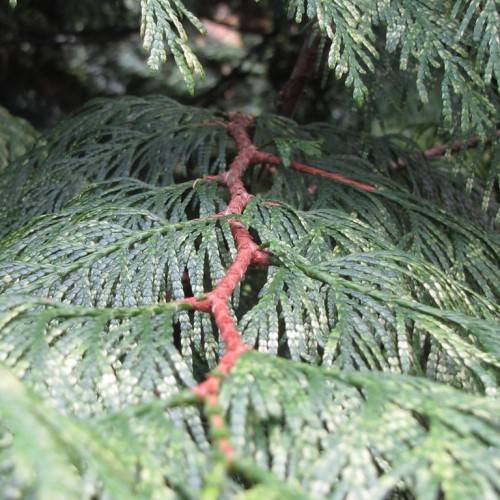
western red cedar
Thuja plicata 'Zebrina'
Cycle:
Perennial
Watering:
Average
Hardiness Zone:
5 - 7
Flowers:
Flowers
Sun:
Full sun Partial sun Shade
Soil:
Loamy Clay Humus Rocky
Fruits:
Fruits In Summer Ready In Fall
Leaf:
Yes
Growth Rate:
Moderate
Maintenance:
Moderate
Drought Tolerant:
Yes
Care Level:
Moderate
watering
Western red cedar (Thuja plicata 'Zebrina') should be watered on a regular basis, about once or twice a week during the summer months. Watering should be done in the early morning or late evening to avoid evaporation. Water the plant until the soil is moist and drain away any excess water that is not readily absorbed. During winter months, watering should be done every 2-4 weeks, depending on your local climate and the soil moisture. Make sure that the soil is slightly moist but not wet; if it is overly wet, reduce the frequency of watering. Any sudden temperature drops or extended periods of below-freezing outdoor temperatures will require less frequent watering. If unsure when to water, simply test the soil by inserting your finger and checking for moisture before adding any water.
sunlight
Western red cedar (Thuja plicata 'Zebrina') prefers bright, indirect sunlight. For optimal plant health, it should receive at least 4 hours of direct sunlight a day, with the sun moving across the sky from east to west during the day. Care should be taken to avoid too much afternoon sun, which may cause sunburn. If possible, place the plant in an area that receives morning sun and afternoon shade, or dappled sunlight. When grown indoors, it should be positioned near a south-facing window.
pruning
Western Red Cedar (Thuja plicata 'Zebrina') should be pruned in late spring (May to June). Pruning should be done selectively and no more than 1-third of the total foliage removed. Pruning should be used to clean up dead or damaged branches, remove competing branches, and to shape the tree into an attractive form. Trees should not be pruned more than 15-20 cm in any pruning session. Pruning more than this can lead to poor tree health and a reduction in flowering over time.
